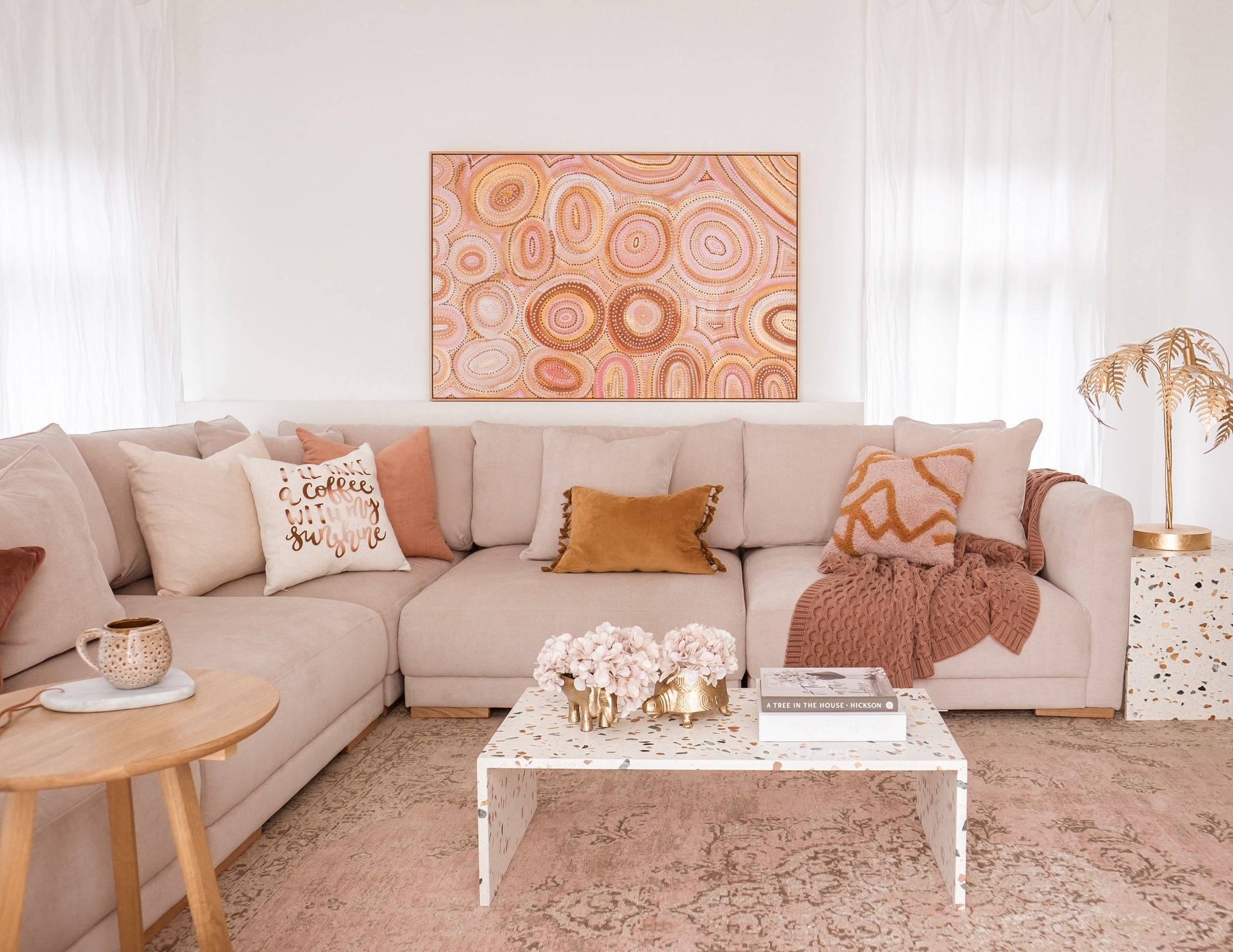
How To Use An Analogous Colour Scheme For Eye-Catching Designs
Learn how to create a harmonious and eye-catching design with an analogous colour scheme. Analogous colours are hues that sit next to each other on the colour wheel, creating a subtle and cohesive look. Identifying analogous colours can be simplified by understanding colour theory, using colour tools, and considering the room’s purpose.
To create an effective analogous colour palette, choose a dominant colour, select adjacent colours, mix different shades and tones, and add a neutral. Analogous colour schemes can be utilised in both print and interior design to create a warm and inviting space. Avoid overusing analogous colours, strive for balance, and add contrast to achieve a stunning result.
Introduction to the analogous colour scheme
Analogous colour schemes are a group of colours that sit next to each other on the colour wheel. These colours share a hue, which makes them work well together in a design. The scheme usually includes three to four colours and can range from warm to cool tones. The colours are harmonious and pleasing to the eye, making them a popular choice in design.
How the analogous colour scheme differs from other colour schemes
The analogous colour scheme is different from other colour schemes because it uses colours that sit next to each other on the colour wheel, while other schemes like complementary and triadic use colours that sit opposite or at equal intervals on the wheel.
Analogous colours create a more subtle and cohesive look compared to contrasting colours. This scheme is ideal for creating a calming and relaxing effect in a space.
Importance of analogous colour scheme in design
Analogous colour schemes are important in design because they create a visual harmony that is pleasing to the eye. This scheme works well in both traditional and contemporary designs, as it can be adjusted to create a warm or cool colour palette.
Analogous colour schemes are versatile and can be used in a variety of design projects, including interiors, graphics, and branding. It is also an excellent choice for those who are new to colour theory and want to experiment with colours.
💡KEY TAKEAWAY: Analogous colour schemes are a group of colours that are next to each other on the colour wheel. They create a subtle and harmonious effect in design and can be used in a variety of design projects. This colour scheme is an excellent choice for creating a calming and relaxing environment in space.
Identifying analogous colours
What are analogous colours and how to identify them
Analogous colours are hues that are located next to each other on the colour wheel and share similar properties, such as warmth or coolness. Identifying them is easier when you have a basic understanding of colour theory. For instance, if you start with one primary colour, look at the colours on either side, which will result in three neighbouring colours.
These are often the best choices for creating an analogous colour scheme.
Different tools and techniques
Choosing analogous colours can be overwhelming at times, especially when you’re not familiar with colour theory. But there are different tools and techniques available to simplify the process. One of these is using online colour palette generators, which can help you identify different analogous hues and complementary colours.
You can also use colour wheel charts, which provide different colour combinations and variations that you can experiment with. Additionally, gathering inspiration from nature, art, and everyday objects that you feel drawn to can help you identify analogous colours.
Tips and tricks to simplify the selection process
If you’re still unsure about your colour choices, there are some tips and tricks that you can use to make the selection process easier. For instance, you can identify the primary purpose of the space and let that guide your colour choices. This means considering the room’s function, mood, and lighting.
Another option is to select a dominant colour and use its neighbouring hues to create a calming and cohesive colour scheme. Lastly, always take paint swatches home and view them in the space you plan to paint. This will help you visualise the colour and its effect on the room.
💡KEY TAKEAWAY: Identifying analogous colours can be simplified by understanding colour theory, using colour tools, gathering inspiration, selecting a dominant colour, and considering the room’s purpose.
Creating an analogous colour palette
Guidelines for a harmonious analogous palette
To choose an analogous colour palette, consider the following.
- Choose a dominant colour. Start with the main colour you want to use in your design and find its adjacent colours on the colour wheel. This will create a cohesive palette and ensure that your design doesn't become too overwhelming.
- Use a variety of shades. Mix different shades and tones of your chosen colours to create a dynamic and interesting design. This will prevent your design from becoming too flat and one-dimensional.
- Add a neutral colour. To balance out the boldness of the analogous palette, consider using a neutral colour like white, grey, or black. This will provide a sense of grounding and give your design a more sophisticated look.
Designing a custom analogous colour palette for your project
If you want to design a custom analogous colour palette for your project, here are some tips to get you started:
- Look for inspiration in nature, art, or other designs.
- Experiment with different shades and tones of your chosen colours.
- Consider the mood or vibe you want to convey with your design.
- Use a colour palette generator tool to help you visualise different options.
💡KEY TAKEAWAY: Analogous colour palettes are a great option for creating a harmonious and balanced design. Follow the guidelines for a harmonious palette, use a variety of shades, and experiment with different options to design a custom palette that works for you.
Utilising analogous schemes in design
Best practices for designing
Designing with an analogous colour scheme can help create a harmonious and unified look for your design. To best utilise this scheme, you must understand how to choose the right colours that will blend well together.
In choosing analogous colours, you have to select colours that are next to each other on the colour wheel. The aim is to create a colour palette that will give your design a graceful gradient of colours.
Remember to choose one dominant colour and use the other colours as accents to avoid overwhelming the overall design. Best practices when designing with an analogous colour scheme include considering the design’s subject matter, understanding the colour properties, and experimenting with tonal variations.
Applying analogous colour scheme in print design
The analogous colour scheme is a perfect choice for print design since it can add warmth and vibrancy to your design. Analogous colours could be applied to create a gradient effect background in a poster or brochure. Combining the right hues of analogous colours adds richness to the overall design and creates a strong impact to attract the viewer’s attention.
If you’re designing for print purposes, ensure that the colours you choose match the overall theme of the design and ensure that the print quality of your final product is high.
Applying analogous colour schemes in interior design
The analogous colour scheme is not limited to print and digital design but can also be applied to interior design. Using this colour scheme can help create a space that’s inviting, warm and harmonious. Choosing the right analogous colours can add depth and personality to any room. An excellent tip for interior design is to blend analogous colours with neutral colours to balance out the scheme.
If you’re looking for a bold approach, you can create a feature wall with an analogous colour scheme or use analogous colours in your rug, decor, and furniture. Remember to be creative and experiment with different analogous colours to create the ambience you want.
💡KEY TAKEAWAY: Utilising analogous colour schemes in design adds warmth, harmony, and vibrancy to your final product. When choosing colours, consider the subject matter, understand colour properties, and experiment with different tonal variations. Applying analogous colour schemes can be used in print and interior design to create a unified space that is inviting and memorable.
Common mistakes to avoid
Overusing analogous colours
While analogous colours can work well together, using too many can result in a monotonous and boring design. Instead of using all the colours in an analogous set, choose a few that complement each other and use them as the main focal point. For instance, if you’re using green, yellow-green, and yellow, choose one as the primary colour, and use the other two as accents.
Achieving balance
Achieving balance in an analogous colour scheme can be tricky. Without balance, one colour may dominate, and the others will be lost. To achieve balance in your design, use one colour as the primary colour and the other two as accents. Focus on using the primary colour, and the other two colours will support it.
Understanding the importance of contrast
Analogous colour schemes consist of colours that are next to each other on the colour wheel. This means they have similar hues and saturations, which can result in a lack of contrast. To add contrast to your design, use different shades and tints of the colours in your analogous set. You can also add contrasting colours to bring out the beauty of your analogous colour scheme.
💡KEY TAKEAWAY: Analogous colour schemes can be beautiful, but it’s easy to make mistakes that can ruin your design. Avoid overusing analogous colours, strive for balance, and add contrast to achieve a stunning result.
At Miss Amara, we understand that a well-chosen rug can elevate a room and transform a house into a home. As an online-only rug store, we curate a wide range of high-quality rugs to fit your style and budget.
















